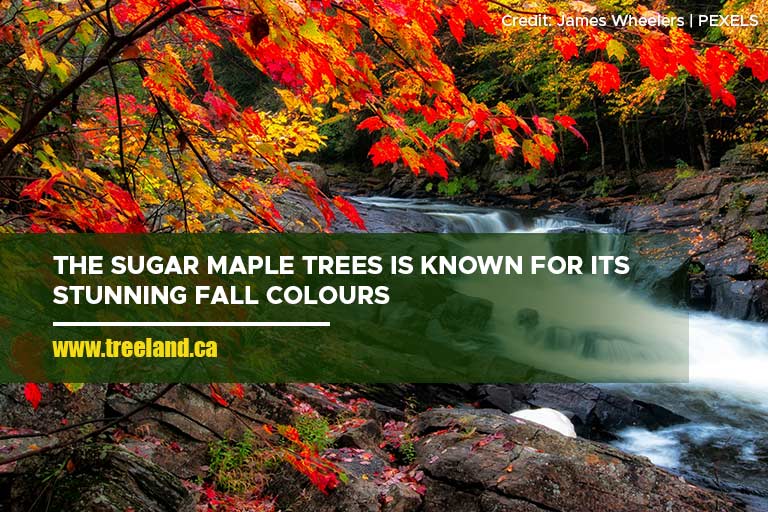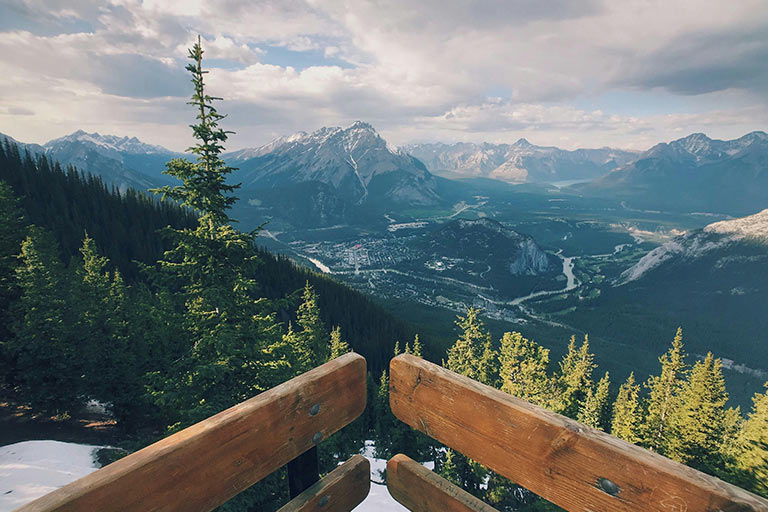Transforming your yard into a beautiful, ecologically friendly space is easier than you might think. In the City of Markham, Ontario, incorporating native trees into your garden design not only enhances the aesthetic appeal but also supports local wildlife and promotes biodiversity. Native trees are well-adapted to the local climate and soil, making them low-maintenance and beneficial for the environment. This guide will walk you through the top 10 native trees for sale in Markham, helping you make informed choices that beautify your yard while supporting the local ecology.
Why Choose Native Trees?
Native trees offer numerous benefits for your yard and the local ecosystem. They are adapted to the local climate, making them easier to care for and more likely to thrive. These trees provide essential habitats and food sources for native wildlife, contributing to a balanced ecosystem. Additionally, native trees enhance the beauty of your garden with their unique foliage, flowers, and seasonal changes.
Top 10 Native Trees for Sale in the City of Markham, Ontario

1. Sugar Maple (Acer Saccharum)
Overview The Sugar Maple is renowned for its stunning fall colours and its role in producing maple syrup. It’s a magnificent addition to any yard in Markham.
Features
- Leaves: Brilliant orange and red hues in fall.
- Size: Reaches up to 75 feet in height and 50 feet in width.
- Growth Rate: Moderate to slow, but long-lived.
Wildlife Benefits Sugar Maples are beneficial for local wildlife. Their seeds are consumed by birds and small mammals, and their dense foliage provides excellent cover and nesting sites for birds. The sap supports various insect species.
2. Red Maple (Acer rubrum)
Overview The Red Maple is famous for its vibrant red foliage in the fall. This tree is a popular choice for adding colour to your yard.
Features
- Leaves: Brilliant red in autumn, turning green during the growing season.
- Size: Can grow up to 50 feet tall with a spread of about 40 feet.
- Growth Rate: Fast-growing, making it ideal for quick impact.
Wildlife Benefits Red Maples attract a variety of wildlife. Their seeds are a food source for birds, and the tree’s flowers provide nectar for bees and butterflies. The dense canopy offers shelter and nesting sites for various birds.
3. White Pine (Pinus Strobus)
Overview The White Pine is a majestic tree with soft, feathery needles and a stately presence.
Features
- Leaves: Long, soft needles grouped in bundles of five.
- Size: Can reach heights of up to 80 feet.
- Growth Rate: Moderate to fast.
Wildlife Benefits White Pines provide critical habitat and food sources for birds and small mammals. The seeds are favoured by squirrels, and the dense branches offer excellent nesting sites.
4. Eastern Redbud (Cercis Canadensis)
Overview The Eastern Redbud is known for its striking pink flowers that appear in early spring, making it a standout in any garden.
Features
- Leaves: Heart-shaped, turning yellow in the fall.
- Size: Typically grows to about 20-30 feet tall.
- Growth Rate: Moderate.
Wildlife Benefits The flowers of the Eastern Redbud attract pollinators such as bees and butterflies. The tree also provides seeds for birds and cover for small animals.
5. Paper Birch (Betula Papyrifera)
Overview The Paper Birch is easily recognizable by its white, peeling bark and graceful form.
Features
- Leaves: Bright green leaves that turn yellow in autumn.
- Size: Can grow up to 70 feet tall.
- Growth Rate: Fast-growing.
Wildlife Benefits Paper Birches provide food for various birds and mammals. The peeling bark is also used by birds for nesting material.
6. American Beech (Fagus Grandifolia)
Overview The American Beech is a stately tree with smooth, grey bark and beautiful golden-brown leaves in the fall.
Features
- Leaves: Glossy green, turning golden brown in autumn.
- Size: Can reach up to 70 feet in height.
- Growth Rate: Slow-growing but long-lived.
Wildlife Benefits The nuts produced by American Beech trees are a crucial food source for many wildlife species, including birds, squirrels, and chipmunks.
7. White Oak (Quercus Alba)
Overview The White Oak is a majestic tree known for its longevity and stately appearance.
Features
- Leaves: Lobed leaves that turn red or brown in the fall.
- Size: Can grow up to 100 feet tall.
- Growth Rate: Slow-growing but extremely long-lived.
Wildlife Benefits White Oaks provide acorns that are a valuable food source for birds, deer, and small mammals. The tree also offers excellent habitat and nesting sites.
8. Serviceberry (Amelanchier Canadensis)
Overview The Serviceberry is a small tree with beautiful white flowers in spring and edible berries in summer.
Features
- Leaves: Green leaves turning yellow to red in fall.
- Size: Typically grows to about 15-25 feet tall.
- Growth Rate: Moderate.
Wildlife Benefits Serviceberries attract pollinators with their flowers and provide berries that are loved by birds and small mammals.
9. Black Cherry (Prunus Serotina)
Overview The Black Cherry is known for its fragrant white flowers and dark, edible cherries.
Features
- Leaves: Glossy green leaves that turn yellow in the fall.
- Size: Can reach heights of up to 80 feet.
- Growth Rate: Fast-growing.
Wildlife Benefits Black Cherry trees provide food for a variety of wildlife, including birds and mammals, who feast on the cherries. The flowers attract bees and other pollinators.
10. Red Oak (Quercus Rubra)
Overview The Red Oak is a strong, durable tree with striking red foliage in the fall.
Features
- Leaves: Dark green leaves that turn red in autumn.
- Size: Can grow up to 75 feet tall.
- Growth Rate: Fast-growing.
Wildlife Benefits Red Oaks produce acorns that are an important food source for many animals. The tree also provides shelter and nesting sites for birds and small mammals.
Designing Your Yard with Native Trees

Choosing the right native trees is just the beginning. To create a vibrant, wildlife-friendly yard, consider the following tips:
Plan Your Garden Layout
Placement: Position your trees to provide maximum benefit. For example, place taller trees to the north to provide shade and shelter from the wind.
Companion Plants: Include native shrubs, wildflowers, and ground covers to create a diverse habitat. This will offer additional food sources and shelter for wildlife.
Create a Diverse Habitat
Variety: Incorporate a mix of trees, shrubs, and ground cover to offer diverse habitats for different species. This diversity attracts a wider range of wildlife.
Water Sources: Adding a birdbath or small pond can attract a wider range of wildlife and provide essential hydration.
Maintain a Healthy Garden
Pest Management: Use eco-friendly methods to manage pests and diseases to protect your trees and the wildlife they support. Avoid using chemical pesticides that can harm beneficial insects.
Regular Care: Ensure your trees and garden receive the necessary care to keep them healthy and thriving. This includes regular watering, mulching, and pruning as needed.
Incorporating native trees into your garden in Markham, Ontario, not only enhances its beauty but also supports local wildlife and promotes biodiversity. By selecting from the top 10 native trees listed above, you can create a sustainable, low-maintenance garden that benefits both you and the environment. Ready to transform your garden with stunning native trees and creative design? Contact Caledon Treeland at (905) 880-1828.
FAQs
What are the benefits of planting native trees?
Native trees are adapted to the local climate and soil conditions, making them easier to care for and more likely to thrive. They also support local wildlife by providing food and shelter.
Where can I find native trees for sale in Markham?
You can find native trees at local nurseries, garden centres, and online retailers in Markham. Many of these places offer a variety of options and expert advice.
How do I plant a native tree?
Dig a hole twice as wide as the root ball and the same depth. Place the tree in the hole, fill it with soil, and water thoroughly. Apply mulch around the base to help retain moisture.
How do native trees benefit local wildlife?
Native trees provide food sources, such as seeds and nectar, and offer shelter and nesting sites for various bird species and insects.
How often should I water my native trees?
Water your native trees regularly to keep the soil moist but not waterlogged. Adjust the frequency based on weather conditions and the tree’s needs.

